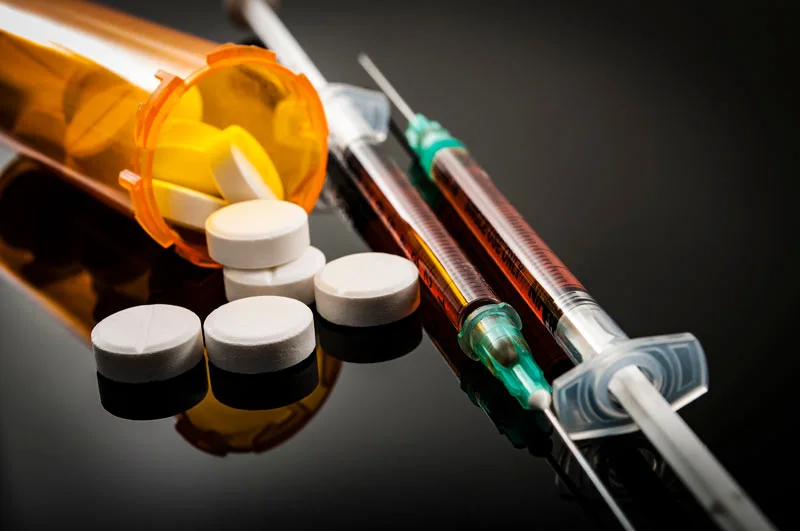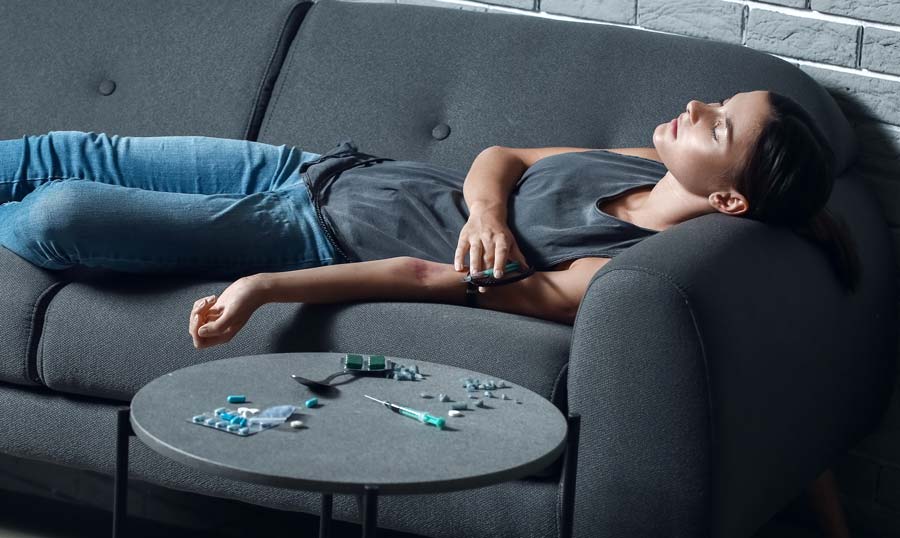Opiate and Opioid Detox
Heroin, along with other opiates and opioids, has become one of our nation’s most popular drugs. And while there are many different types of opiates, heroin remains the drug of choice for millions who abuse opioids such as morphine, codeine, fentanyl, methadone, and buprenorphine.
However, that doesn’t mean the problem is limited to just street heroin alone. Prescription pain relievers remain a massive issue among individuals with substance use disorders.
The Centers for Disease Control reports more than 12 million people abused prescription pain relievers in 2017 alone. This number was up from 11.6 million in 2016.
The CDC also reported nearly 2 million enrollments in some form of opiate and opioid detox program between 2011 and 2014. These numbers don’t include those who could not seek treatment due to stigma, fear of legal repercussions, or simple inconvenience.
Hopeful Developments in Opioid Treatment
While these statistics paint a bleak picture of addiction today, the good news is that help exists. There are various routes to recovery, including medication-assisted therapy (MAT), which includes medications used in conjunction with behavioral therapies.
MAT helps patients overcome their dependency by preventing cravings through gradual dose reductions over time. Medications used in this type of program often cause fewer side effects than other methods, making them ideal for long-term usage.
This article will discuss everything you should know about opiate and opioid addiction, why a medical detox may be necessary, common signs of withdrawal, and what occurs during detox. You’ll learn about the different stages of withdrawal, how long each last, and what kind of assistance you’ll receive during your stay at rehab.
Overview of Opiates and Opioids

All opiates and opioids fall under the central nervous system depressants class, meaning they primarily affect the part of the brain responsible for controlling movement and breathing. Users experience euphoric feelings like being high on marijuana or alcohol when taken recreationally.
However, taking too much can lead to death. According to the National Institute on Drug Abuse, overdose deaths caused by opiates have quadrupled since 2000. In 2021, the number of deaths triggered by opiate and opioid abuse spiked to nearly 100,000.
There are two main categories of opioids: natural and synthetic. Opiates fall under the natural category of these substances.
Most commonly found in nature is opium, derived from poppy plants grown worldwide. Morphine itself isn’t naturally produced but instead comes from processing opium. During this process, alkali chemicals called glycosides remove water from the plant matter, resulting in morphine, which we recognize as a powerful narcotic pain reliever. Other active substances include codeine, oxycodone, hydrocodone, and carisoprodol.
Synthetic opioids come in varying forms and strengths, allowing researchers to create compounds specifically tailored to treat specific ailments without any risk of potential overdose. Some examples include oxymorphone and the deadly fentanyl.
Experience True Healing
Our deeply-caring staff and the surrounding natural beauty offer an unparalleled healing experience.
The Role of Opioid Agonists in Withdrawal Management
Methadone and buprenorphine are both classified as agonist partial mu receptor antagonists. Agonists stimulate receptors, causing full activation of cell functions.
Antagonists work against agonists by blocking the stimulation of receptors. Buprenorphine and methadone fit here because they block the body’s ability to feel pleasure and euphoria associated with using opiates, thereby reducing craving and withdrawal symptoms.
The U.S Food and Drug Administration approves both to help curb opioid use. Methadone and buprenorphine must be prescribed by doctors and monitored closely throughout treatment. For example, severe health risks may occur if individuals take either substance outside of its recommended dosage range.
Other treatments exist for opioid use disorder and opioid detox. Combining multiple treatments has shown positive results in helping users recover and maintain sobriety.
Do I Need Detox for Opioid Dependence?
It’s imperative to address any substance abuse disorder before it’s too late. A medically assisted detox provides the means to help avoid many of the negative consequences of opioid dependence.
It’s crucial to remember that quitting cold turkey at home doesn’t always end with the best results. Often, users find the discomfort and pain associated with opiate and opioid detox too much to bear and end up in relapse.
The most challenging portion of detox to deal with besides the cravings is opiate and opioid withdrawal symptoms. Besides making it extremely difficult to continue detoxing, these symptoms may also lead to further health challenges.
Opioid Withdrawal Symptoms

The abrupt discontinuation of opioid use can result in unpleasant withdrawal symptoms. These symptoms include the following:
- Anxiety
- Restlessness
- Nausea
- Diarrhea
- Muscle aches
- Insomnia
- Headaches
- Restlessness
- Depression
- Irritability
- Hot and cold chills
Opioids act directly upon the brain’s reward pathways and activate dopamine release, leading to pleasurable sensations. As soon as we stop engaging in addictive activities, our brains begin to crave the same activity again. Without proper intervention, the cycle continues indefinitely.
Medical Detox for Safe Withdrawal
Medical detox is vital for the safest withdrawal process possible. While it is possible to achieve complete detoxification at home using a cold-turkey method, it’s not recommended.
When someone attempts to detox at home, they put themselves at risk for the following situations and challenges:
Health Risks
Whenever someone decides to detox, changes manifest in the body that can cause significant health challenges. Drastic increases in blood pressure and heart rate can considerably raise the risks of at-home detox.
Dehydration is another factor that comes into play. It’s challenging to stay hydrated and keep food down, making malnutrition during the detox period a possibility.
Relapse
Attempting at-home detox instead of medical detox for safe withdrawal drastically increases the odds of relapse. When withdrawal symptoms become too uncomfortable to bear, it’s too easy to slip away to acquire your opioid of choice.
Even with the most supportive environment, individuals going through withdrawals can become master manipulators. It’s difficult for someone inexperienced to watch someone go through withdrawal and not give in to their requests to allow themselves to “get well.”
Depression
Depression is an issue during the detox period, and it’s important to have mental health professionals on hand as well as accompanying medical staff. Although most mental health counseling takes place during the period after detox, having access to these professionals is essential in times of great need.
To better understand what the process entails, the following section contains a potential timeline of opioid withdrawal.
Potential Timeline of Opioid Withdrawal
The potential timeline of opioid withdrawal may vary slightly depending on the severity of each situation and the specific substance in question. However, the example below is a pretty good illustration of what to expect as far as timing during the detox process.
Days 1-2
Anywhere from 12 to 24 hours after the last use, the first effects of withdrawal begin to take hold. Users may feel anxiety about the severity of the coming symptoms and the urge to use. Yawning, watery eyes, and a general feeling of discomfort are common side effects during this period.
Days 2-5
Generally, the withdrawal symptoms will begin a noticeable increase in severity around the second day. Hot flashes and cold chills, goosebumps, intense sweating, nausea, vomiting, restlessness, and insomnia are the most common side effects during this stage.
The lack of sleep is the most demoralizing effect during this period. The feelings of fatigue and discomfort are strong, but it’s difficult to get restful sleep because of muscle aches and restless legs.
Days 5-8
Many of the noticeable physical effects will begin to subside during this period. Fringe effects may still linger, and users will be sensitive to extreme hot or cold.
Insomnia persists and may continue for weeks and sometimes months after this stage. The post-acute withdrawal becomes the next hurdle once the acute withdrawal phase is over.
Post-Acute Withdrawal Symptoms
Post-acute withdrawal symptoms are the sudden return of the random acute-withdrawal side effects. These can include the return of hot flashes and cold chills, goosebumps, and intense sweating.
The most challenging portion of post-acute withdrawal symptoms is the mental element. Intense cravings often accompany bouts of post-acute withdrawal, and it’s essential to have a contingency plan in place.
Experience True Healing
Our deeply-caring staff and the surrounding natural beauty offer an unparalleled healing experience.
Medication-Assisted Treatment Programs

Medication-assisted treatment (MAT) programs benefit several different scenarios during recovery from opioid abuse. Three FDA-approved methods currently exist as MAT programs for opioids – two as an alternative to the standard detox method and one for use after complete detox.
Detox Alternatives
Two MAT programs exist as alternatives to the standard detox process. Methadone and Suboxone are prescribed to assist clients in avoiding the adverse side effects of withdrawal while learning to live and function normally again.
These two medications produce similar results but operate differently. Methadone is a strong synthetic opioid that’s dosed once per day. Because it binds to the opioid receptors, users avoid the detox period and accompanying withdrawal symptoms.
Methadone doesn’t contain any form of blocking agent, but because of its strength, users rarely feel other opioids on top of the methadone – making attempts to get high futile.
Suboxone is also dosed once per day but contains a combination of two different medications. Buprenorphine and Naloxone come together to create the formula in Suboxone and work together to provide similar benefits to methadone.
Buprenorphine is only a partial opioid agonist, meaning it doesn’t fully activate the receptors and works in small doses. Naloxone is an antagonist that binds the receptors from feeling any intoxicating effects that the buprenorphine may otherwise cause.
Because of the Naloxone, the effects of other opioids are blocked, eliminating the chances of any euphoria. However, because of the chemical makeup of Suboxone, users must abstain from opioids for 24-48 hours before beginning a regimen – otherwise, they risk suffering from precipitated withdrawals.
The point of both MATs is to allow former users to return to a standard quality of life without stressing over the severity of withdrawal. They’re also effective at eliminating cravings for opioids.
Alternatively, the other type of MAT requires users to go through the detox process before beginning treatment entirely.
Post-Detox MAT
Naltrexone (Vivitrol) is a monthly injection given to prior opioid users who have completed detox. This injection helps eliminate cravings for opioids and completely blocks the effects.
While the two former medications exist to stave off withdrawal and detox for an extended period, Naltrexone works better against the post-acute withdrawal phase.
It’s important to remember that neither of these MATs is nearly as effective as the combined result of proper therapy and substance abuse treatment with the medication.
Dual Diagnosis and the Underlying Causes of Drug Use
A dual diagnosis is a form of treatment that’s gained popularity over the last few years in many substance abuse treatment facilities. It’s a combination of mental health therapy and substance abuse treatment that allows counselors to treat two issues at once.
The theory behind this treatment is that there is an underlying mental health disorder acting as a trigger behind every substance abuse disorder. Combining treatments and approaching both disorders proactively allow clients and counselors to treat the actual cause of substance abuse and not just treat the symptoms.
Having access to mental health treatments like dual diagnosis therapy is essential as a foundation for recovery. Combined with additional building blocks, clients have the best chances for long-term success.
Foundations for Recovery Following Detox
Foundations for recovery following detox are essential for getting the right start towards lasting sobriety. The following examples are necessary as foundations for recovery before, during, and after treatment:
- Effective treatment options for mental health and substance abuse
- Knowledge, education, and awareness of mental health and substance abuse
- Peer recovery and support during and after treatment
- Additional activities to promote recovery and mental wellness (art therapy, yoga, etc.)
- A robust support system for post-treatment (family, friends, spouse, etc.)
Having the proper backdrop during treatment also provides significant benefits and helps pave the road to recovery.
Experience True Healing
Our deeply-caring staff and the surrounding natural beauty offer an unparalleled healing experience.
Why Choose Healing from Opioids In Hawaii?

Recovery certainly takes strength, willpower, and the right treatment team. However, external elements also further the efforts of the path to success.
Any scenic, tranquil, or beautiful environment can have substantial calming and healing effects on the mind during processes like substance abuse recovery. What better backdrop for healing from substance abuse and the associated traumas than the beautiful Hawaiian Islands?
Beautiful beaches, breathtaking sunsets, and an overall picturesque landscape is the breath of fresh air many clients need during treatment.
Long Term Recovery from Opioids Is Possible
At Exclusive Hawaii Rehab, we believe in taking a holistic approach to recovery combined with traditional mental health and substance abuse treatment methods. Clients get only the most comfortable amenities and an undisturbed environment to spend their time healing.
When clients are at maximum comfort with no external stress or anxiety, we believe that there is a more focused effort towards recovery. Contact a member of our admissions staff for any questions and information regarding availability.